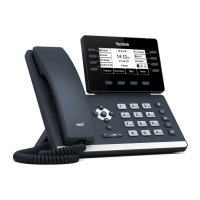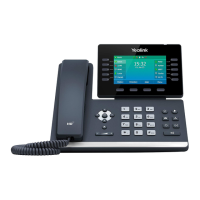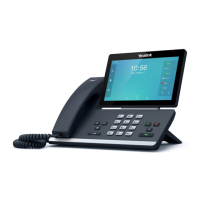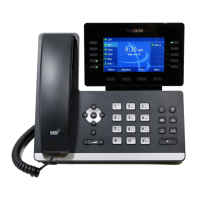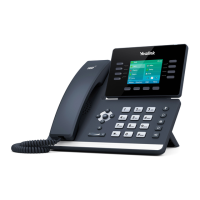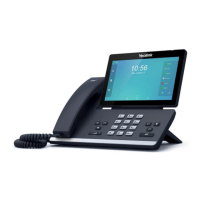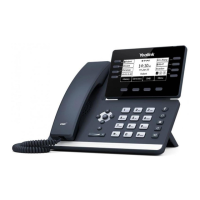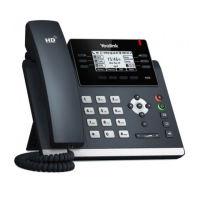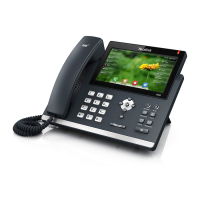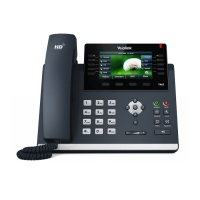Configuring Security Features
949
2. Click Browse to select the certificate (*.pem and *.cer) from your local system.
3. Click Upload to upload the certificate.
Secure Real-Time Transport Protocol (SRTP)
Secure Real-Time Transport Protocol (SRTP) encrypts the RTP during VoIP phone calls to avoid
interception and eavesdropping. The parties participating in the call must enable SRTP feature
simultaneously. When this feature is enabled on both phones, the type of encryption to utilize
for the session is negotiated between the IP phones. This negotiation process is compliant with
RFC 4568.
When a user places a call on the enabled SRTP phone, the IP phone sends an INVITE message
with the RTP encryption algorithm to the destination phone. As described in RFC 3711, RTP
streams may be encrypted using an AES (Advanced Encryption Standard) algorithm.
Example of the RTP encryption algorithm carried in the SDP of the INVITE message:
m=audio 11780 RTP/SAVP 0 8 18 9 101
a=crypto:1 AES_CM_128_HMAC_SHA1_80 inline:NzFlNTUwZDk2OGVlOTc3YzNkYTkwZWVkMTM1YWFj
a=crypto:2 AES_CM_128_HMAC_SHA1_32
inline:NzkyM2FjNzQ2ZDgxYjg0MzQwMGVmMGUxMzdmNWFm
a=crypto:3 F8_128_HMAC_SHA1_80 inline:NDliMWIzZGE1ZTAwZjA5ZGFhNjQ5YmEANTMzYzA0
a=rtpmap:0 PCMU/8000
a=rtpmap:8 PCMA/8000
a=rtpmap:18 G729/8000
a=fmtp:18 annexb=no
a=rtpmap:9 G722/8000
a=fmtp:101 0-15
a=rtpmap:101 telephone-event/8000
a=ptime:20
a=sendrecv
The callee receives the INVITE message with the RTP encryption algorithm, and then answers
the call by responding with a 200 OK message which carries the negotiated RTP encryption
algorithm.
